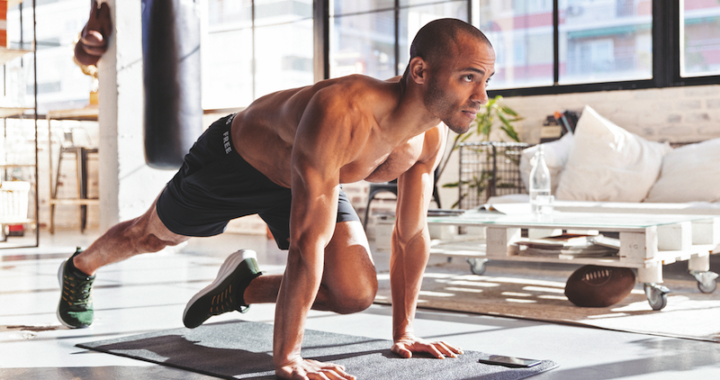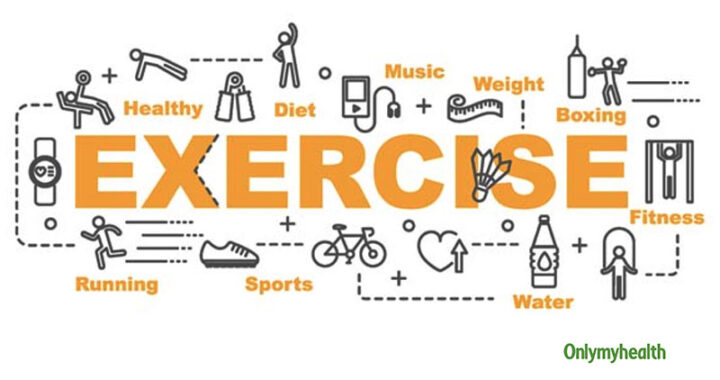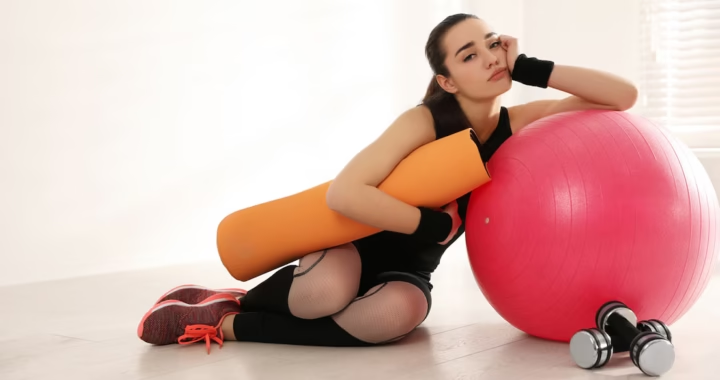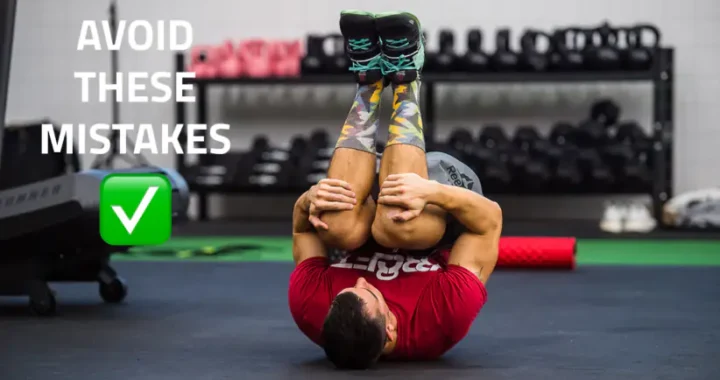
Category Archives: Uncategorized
“What to Eat Before and After a Workout”
Posted on by ak7830304@gmail.com
“What to Eat Before and After a Workout”
Eating habits are just as crucial to fitness as training methods. Even if you have the greatest exercise regimen in the world, your development and energy levels will be gradual if your diet isn't helping you. Whether you want to lose weight, build muscle, or perform better, we'll show you just what to eat before and after a workout in this comprehensive guide. You will discover when to consume, what kinds of food to eat, and how to steer clear of common blunders that hinder your progress. The Significance of Nutrition Before and After Exercise You have a machine-like body. It won't operate or recover well if you don't properly fuel it. Eating before your workout offers you the energy you need to finish it without feeling exhausted. Food after exercise aids in muscle growth, repair, and reconstruction. If you do this correctly, you will encounter: Increased vitality while exercising quicker healing of muscles Decreased discomfort enhanced muscle growth or fat loss (depending on your objective) Increased motivation and consistency When Is the Best Time to Eat? Aim to eat one to three hours before to working out. Your body will have more time to process food and turn it into energy that can be used. Eat a little snack 30 to 60 minutes before doing out if you're pressed for time. Following Your Workout: 30 to 60 minutes following exercise is the optimal window. Your body is best prepared to absorb nutrients and start healing at this time. Foods to Consume Prior to Exercise Fueling your muscles, sustaining energy, and preventing mid-workout crashes are the objectives of a pre-workout meal. Included in your pre-workout meal should be: Carbs: a source of rapid energy Protein: to maintain muscle mass and initiate repair at an early stage Minimal fat since it slows down digestion Examples of Meals to Eat One to Two Hours Before a Workout: Option for Meals The Reason It Works Brown rice, vegetables, and grilled chicken Harmonious and invigorating Banana + whey protein + oats Fast-digesting proteins and complex carbohydrates Apple slices, peanut butter, and whole-grain toast maintains vitality without causing bloating Easy Snacks to Eat 30 to 45 Minutes Before Working Out: Why This Snack Is Effective Peanut butter with banana Rich in energy and easy on the stomach Berries and Greek yogurt Quick-digesting carbohydrates and protein Shake with protein and half a banana Excellent for rigorous schedules or morning workouts Foods Not to Eat Right Before Exercise: Foods high in fat, such as burgers and fried food, slow down digestion. Foods high in dairy or spices may cause stomach distress. Eating large meals within 30 minutes beforehand may result in cramping or nausea. What to Consume Following Exercise Your body is in repair mode after working out. Your muscles' fuel, glycogen, has been depleted, and their fibres require nourishment to repair. Included in your post-workout meal should be: Protein: for muscle growth and repair Carbohydrates: to restore glycogen Moderate amounts of fat are optional. The best source of protein is chicken breast. Egg whites or eggs Whey protein shake Greek yogurt For plant-based diets, lentils or tofu Top Sources of Carbohydrates: Sweet potato Oats Fruits (mango, berries, and bananas) Whole grains (quinoa, brown rice) Whole-wheat bread or spaghetti Sources of Healthy Fat (optional): Nut butters or avocados Olive oil Flax or chia seeds Ideas for Post-Workout Meals: What Meals Give You Salmon on the grill with sweet potatoes and spinach Omega-3s, complex carbohydrates, and protein Banana + oats + whey protein smoothie Easy to absorb and a speedy recovery Whole wheat bread with scrambled eggs and fruit Light, content, and well-balanced Quinoa, chickpea salad, and olive oil Excellent vegetarian choice Avoid Ignoring This Window After working exercise, try to eat within 30 to 60 minutes. Overdoing it might hinder muscular growth and recovery. Start with a shake or snack if you are unable to eat your entire meal at once, and then finish it in one to two hours. Adapt Your Diet to Your Level of Fitness Objective If Losing Fat Is Your Goal: Maintain reasonable portion sizes. Prioritize lean protein, vegetables, and a moderate quantity of carbohydrates. After working exercise, stay away from sugary snacks. Drink plenty of water. For instance, grilled chicken salad with a little brown rice and olive oil If you want to gain muscle, you should eat more protein. Increase your carb intake for energy and recuperation. After your training, eat a substantial meal rather than just a shake. For instance, steamed broccoli, mashed sweet potatoes, turkey breast, and a few almonds If you're exercising first thing in the morning: If you're free: Eat toast with eggs or oats before working out. If you're pressed for time: Eat a banana or a smoothie twenty minutes before to After that: Make eating a hearty, protein-rich breakfast a priority. For instance, a protein smoothie made with peanut butter, bananas, and oats Hydration: Remember the Fundamentals Water is essential for both performance and recuperation. Headaches, exhaustion, and subpar performance can result from even minor dehydration. Hydration Advice: Half an hour before working out, consume 300–500 ml (1–2 glasses) of water. Drink water when you're training, especially if you're doing high-intensity or cardio. After your workout, rehydrate and, if you perspire a lot, add electrolytes. Typical Nutritional Errors to Avoid For intensive workouts, working out on an empty stomach may cause exhaustion, lightheadedness, or muscle breakdown. Skipping meals after working out ⇒ You lose out on the best window for recuperation and could feel lethargic afterwards. Overeating after working out ➤ Exercise shouldn't be used as a justification for bingeing; moderation is essential. Dehydration ➤ impairs performance, particularly during cardio or in hot weather. Eating only protein ⇒ Carbs are just as vital for energy and muscle repair.
Concluding remarks
Properly fueling your body before and after exercise has a profound impact on your mental and emotional well-being in addition to your physical results. You'll see the following when you begin to view food as fuel rather than punishment: Improved performance Reduced soreness Quicker outcomes More happiness on the path to fitness Don't only ask yourself, "What exercises will I do?" the next time you're planning your workout. "How will I fuel my body to perform and recover?" is worth asking. Because being fit involves more than simply working out; it also involves what you eat.
Do You Need Assistance With Your Nutrition for Fitness? We provide specialized advice, fitness coaching, and personalized nutrition programs based on your objectives. [Get in touch with us right now] | [Schedule a nutritional consultation] | [Enroll in our training course]
“Beginner’s Guide to Building a Workout Routine”
Posted on by ak7830304@gmail.com
“Beginner’s Guide to Building a Workout Routine”
Starting a fitness journey is one of the best things you can do for your long-term health, well-being, and self- esteem. Many people are discouraged before they even begin by the question, "How do I build a workout routine that works for me?" With so much contradicting information available online, it's simple to become confused.
Actually, creating a fitness plan doesn't have to be hard; all you have to do is understand the basics, set clear goals, and get started. We'll walk you through the process of developing a beginner's fitness routine that is simple, fits into your lifestyle, and is reliable in this guide.
Step 1: Establish Your Fitness Objectives Consider your goals before you put on your shoes or lift a single weight. Your training focus is determined by your aim. Here are a few instances of typical ones: Loss of weight and burning of fat Building and toning muscles Increased endurance or stamina Flexibility and mobility Overall health and vitality Give specifics. Rather than stating "I want to lose weight," state "I want to lose 5 kg in 3 months by exercising 4 times a week." Pro Tip: Ensure that your objective is clear. Your routine has purpose when you have objectives.
Step 2: Recognize the Four Essential Elements of a Balanced Routine Four components are necessary for a beginner's training program to be effective:
1. Cardio, or aerobic, training Great for heart health, endurance, and burning fat. Dancing, jogging, cycling, brisk walking, and jump rope are a few examples. As a beginner's tip, start with 20 to 30 minutes, two to three days a week.
2. Strength exercise, also known as resistance training, tones the body, boosts metabolism, and helps people gain muscle. Dumbbells, resistance bands, and bodyweight workouts like push-ups and squats are a few examples. Beginner tip: Two or three days a week, start training your full body.
3. Mobility and flexibility reduce the chance of injury, promote better posture, and hasten the healing process. Examples include yoga, foam rolling, and stretching. Beginner tip: Stretch for five to ten minutes after every session.
4. Rest & Recovery Your body needs time to rebuild muscle and vitality. Beginner's advice: Every week, take at least one or two days off.
Step 3: Select Your Weekly Exercise Routine Here's an example of a weekly schedule that is easy for beginners:
Type of Day Workout Monday: 30 minutes of full body strength Page 1 of 3 Tuesday Cardio (30 minutes of brisk walking or riding)
Wednesday: Light yoga or rest Thursday Whole Body Power (30 minutes) Friday Cardio (20 minutes of jogging or HIIT)
Saturday: Core & Flexibility Sunday: Get Plenty of Sleep Advice: Tailor the days to your own schedule. More important than perfection is consistency.
Step 4: Establish an introductory program for full-body strength training This easy full-body workout may be done at home or in the gym and doesn't require any extra equipment: Perform two or three rounds:
Body weight 12 squat repetitions Push-ups or knee push-ups Eight to ten times 12 bent-over row repetitions with water bottles Twelve glute bridge repeats For twenty to thirty seconds, hold the plank. 20 climbers of mountains (10 on each side)
Take a 30- to 60-second pause between workouts. Progression Tip: Every week, increase the number of reps by one round or more as your strength increases.
Step 5: Encourage a Healthy Diet to Support Your Routine It goes beyond the frequency of your workouts. The proper fuel is necessary for results. Concerning Newcomers: Consume natural foods like whole grains, fruits, veggies, and lean meats. To stay hydrated, consume two to three litres of water per day. Make protein a priority because it helps with fat loss and muscle restoration. Avoid sugar and processed foods as they deplete energy and hinder advancement. Eat a snack before working out: Bananas and peanut butter Protein drinks, oatmeal, or eggs make good post- workout snacks.
Step 6: Monitor Your Development Make notes in a Google Sheet, an app, or a notebook: Days of exercise Weights, repetitions, and sets Body measurements every month How you feel, including your strength, energy, and sleep Keeping an eye on things keeps you
Typical Errors Made by Novices Create (Avoid) These! Getting started simple → Avoid taking on too much at once. Give your body time to adapt. Ignoring days of
rest ➤ Recuperation = outcomes. Obsessing over the scale ➤ Losing weight ≠ Losing fat. Compared to fat, muscle weighs more. Carelessly copying the routines of influencers ➤ Not every workout is appropriate for every aim. Create your own strategy. Routines that are inconsistent ➤ Are you missing a day? Tomorrow,get back on track. Just keep going.
Are You All Set to Begin Your Fitness Adventure? Allow us to assist you in creating a personalized starter exercise program that suits your objectives and way of life.
[Chat with a trainer] | [Schedule a free consultation] | [EMAIL ak7830304@gmail.com]
How to Stay Motivated to Work Out – Even on Lazy Days
Posted on by ak7830304@gmail.com
How to Stay Motivated to Work Out – Even on Lazy Days
We've all experienced days when the mere prospect of exercising makes us feel worn out. Perhaps you're simply not feeling it, perhaps it's raining outside, or perhaps you're psychologically exhausted. The fact is that even the most motivated athletes don't always have motivation. What distinguishes short-term effort from long-term accomplishment, however, is the ability to persevere through sluggish days.
This blog will explore the causes of motivational decline and, more crucially, how to overcome it using doable, everyday tactics. These suggestions will help you stay on course, especially on the days when you don't feel like it, whether you're just starting out or attempting to maintain consistency.
The Reasons Behind Our Decline in Motivation
Let's first examine the issue before moving on to potential solutions. The following are some typical causes of low motivation:
-
Absence of discernible advancement
-
Disinterest in the routine Mental exhaustion or stress
-
Inadequate nutrition or sleep
-
Unattainable objectives
-
Making comparisons with other people
-
To overcome it, you must first identify what is depleting your motivation.
1. Establish Specific, Achievable Goals
Say "I want to work out four times a week for 30 minutes" rather than "I want to get fit.
" You have something tangible to strive for when you set clear, quantifiable goals. To experience the joy of reaching milestones, break large goals down into smaller, more doable pieces. Pro Tip: Put your weekly objective in a conspicuous place, like your calendar, phone, or mirror.
2. Make a schedule for your workouts and treat them like appointments.
Your workouts will always be optional if they aren't scheduled. Don't cancel on yourself in the same way that you wouldn't cancel a doctor's appointment or a job interview.
Set aside a particular period of time each day for exercising. Be constant whether it's morning, afternoon, or night.
Bonus: Put your training attire in a visible location and set reminders on your phone.
3. Keep Your "Why" in Mind
Emotional motivation is more powerful. Why do you want to be in shape?
How will my life turn out if I maintain my consistency? By remaining healthy, what pain will I avoid? Perhaps it's to feel stronger every day, increase confidence, prevent future health problems, or have energy to play with your children. Put your justifications in writing and go over them frequently.
4. Cut the Workout Shorter (But Take Action)
Do just five minutes when you don't feel like it. The energy usually follows after you get going.
Try this rule: "I can stop after five minutes if I'm still not motivated." You probably won't stop. The hardest part is getting started.
5. Look for a Partner in Accountability
Commitment is increased while working out with a friend or coach. If someone is waiting for you, it's considerably more difficult to cancel a session.
Among the options are:
-
A gym partner
-
A partner for virtual check-in
-
Taking part in group exercise programs
-
Employing a personal trainer
Concept: Share your fitness objectives on social media and monitor your progress—your followers will serve as your accountability system!
6. Vary It Up to Prevent Boredom
Burnout results from doing the same workout every day. Use variation to keep your routine enjoyable and novel:
-
Try boxing, dancing, yoga, HIIT, and cycling.
-
Participate in a fitness competition
-
Switch up the music or settings for your workouts.
-
Track various trainers on the internet.
Challenge: For a month, try a different kind of exercise every week.
7. Make Use of Habit Stacking and Rewards
Make exercise a good association in your brain. After working out, treat yourself:
-
A nutritious smoothie
-
Netflix for thirty minutes
-
Music and a hot shower
-
Putting a significant date on your calendar
Additionally, you can combine exercises with routines you already follow, such as "I'll stretch for 15 minutes after brushing my teeth.
8. Monitor Development Beyond the Scale
You lose motivation when you don't "see" outcomes. However, improvement goes beyond simply losing weight.
Track:
-
Strength (more repetitions, heavier weights)
-
Flexibility (increased range and motion)
-
Levels of energy
-
Mood enhancements
-
More restful sleep
-
An increase in confidence
Advice: Take monthly progress photos or maintain a fitness journal.
9. Keep Up With Motivating Fitness Creators
Be in the company of inspiring people! You can benefit from social media if you follow the appropriate people.
Seek out:
-
Free routines shared by trainers
-
True transformational tales
-
Daily motivational videos or reels for exercise
Communities that support one another should stay away from phony or unrealistic information. Put inspiration ahead of comparison.
10. Recognize that not all workouts will be spectacular
You will feel strong on some days. On other days, you won't even get through the warm-up. And it's alright.
The goal of fitness is to consistently show up, even when it's difficult. Perfection is not the point.
Remember that you develop more discipline when you show up on your worst day than when you show up on your finest day.
An Example of Motivation in Real Life
Assume that Tuesday night is wet. After a tough workday, your couch seems cozier than your yoga mat.
Start by stretching for only five minutes. Play the hype playlist of your choice.
Long-term achievement is driven by discipline rather than motivation. Even your most lazy days can become your proudest victories if you have the correct resources. Keep in mind: Just do something; you don't have to do everything. Are You Ready to Take Over Your Free Days?
Join our community, look through our personalized training regimens, or schedule a free consultation with one of our knowledgeable trainers.
Allow us to support your continued strength, inspiration, and consistency. ak7830304@gmail.com is [EMAIL US] | [Get your first session for free] | [Follow on Instagram]
[EMAIL US ak7830304@gmail.com] | [Follow on Instagram] | [Book your first free session]
Top 5 Fitness Mistakes Beginners Should Avoid
Posted on by ak7830304@gmail.com
Top 5 Fitness Mistakes Beginners Should Avoid
It's thrilling to begin your fitness adventure, but it may also be intimidating. With so much information available, it's simple to make typical mistakes that could hinder your growth or even cause harm. Here are five fitness blunders to steer clear of if you're just starting out in order to position yourself for long-term success.
-
Ignoring the Warm-Up
Many novices are eager to get started right away, particularly if they are pressed for time. But one of the quickest ways to be hurt is to miss your warm-up. Your heart, joints, and muscles are ready for exercise as you warm up. It only takes five to ten minutes of dynamic stretching or light cardio (such as jumping jacks or brisk walking) to prepare your body for a decent warm-up.
-
Overdoing It Too Soon
You have a lot of motivation! However, early overtraining can result in injury, pain, or burnout. Beginners frequently strive to work out daily or lift large objects right away because they believe that more is better. It takes time for your body to adjust. Allow rest days in between your three to four days of moderate exercise each week. Being fit is a journey, not a race.
-
Disregarding Correct Form
At first, it's simple to become preoccupied with your weight or the number of repetitions you're performing. However, poor form might result in delayed improvement and significant injury. Prioritize technique, even if it means doing fewer repetitions or using lighter weights. To learn the proper technique to move, think about watching reliable instructional films or working with a skilled trainer—even online.
-
Failure to Follow a Methodical Plan
You won't get regular results from haphazardly choosing YouTube routines or meandering through the gym. You can track your progress, concentrate on the proper muscles, and maintain motivation with the aid of a well-thought-out strategy. Maintaining a training regimen is essential, regardless of your fitness objectives, such as strength, endurance, or weight loss. Seek out plans that are easy for beginners or think about hiring.
-
Disregarding Nutrition




